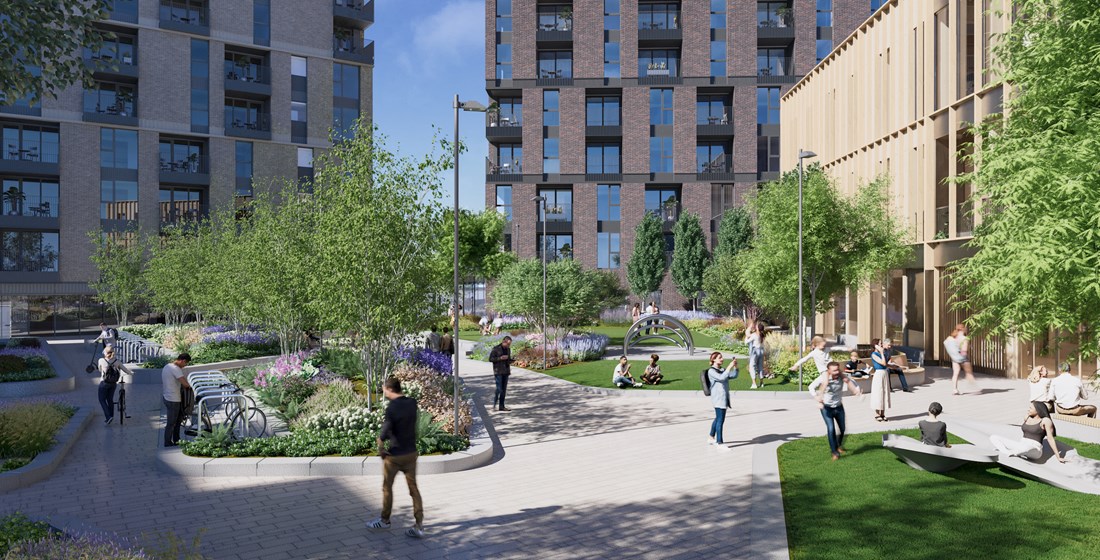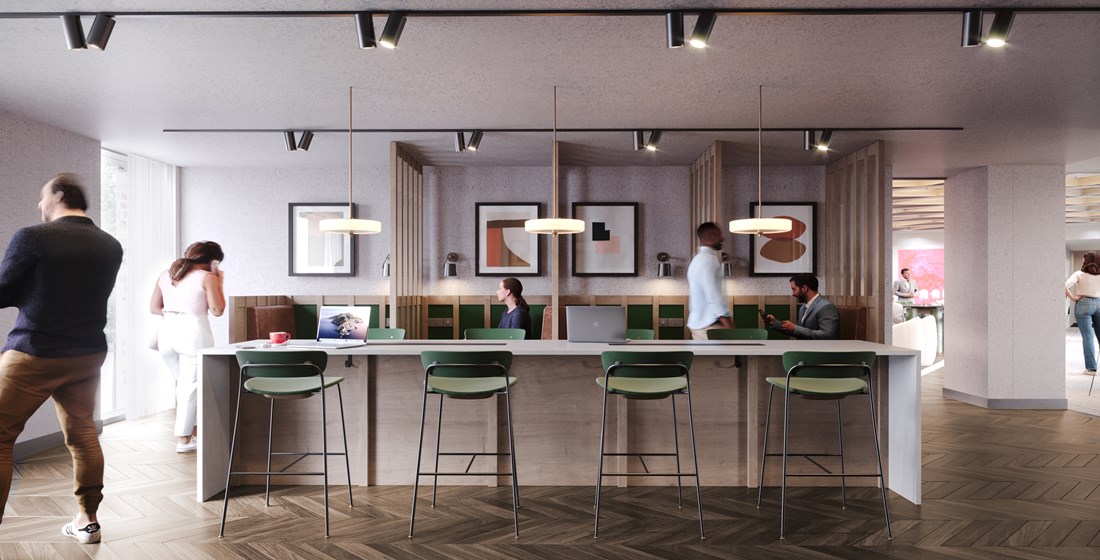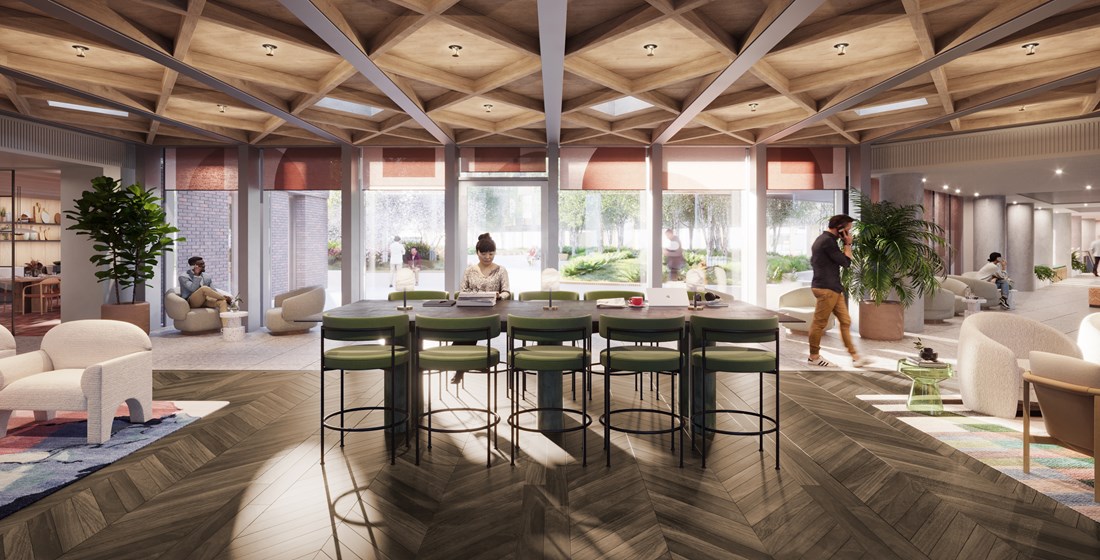Leading the way in sustainable design
- 27th Sep 23
Images from Author, King's Cross, Camden by Related Argent - find out more here
Stepping up to play a crucial role in creating a sustainable future is the Build to Rent sector, where smart design co-exists with the values that modern renters hold close. The industry has embraced the principles of sustainability and net-zero energy consumption, setting a new standard for responsible development.
This commitment to sustainability not only addresses environmental concerns but also caters to the growing demand from residents for eco-friendly, energy-efficient and comfortable living spaces.
Living as sustainably as possible is increasingly important to renters as awareness of the green agenda continues to grow. The Office for National Statistics surveyed UK households and found that around three-quarters (75%) of adults in the UK were concerned to some degree about climate change. In the JLL 2023 Tenant Survey Report more than three quarters (76%) of tenants stated that their home’s energy efficiency is more important to them now than a year ago. Furthermore, a staggering 90% of those surveyed said it would be an important or crucial factor when it comes to their next home. Developers are responding by building homes that are kinder to the environment whilst improving the quality of life for residents.
Within the Build to Rent sector, customers view the sustainable features as a whole and how they benefit the quality of life for an individual as well as considering the broader impact on the environment. This will start at the beginning by working with cutting-edge architectural and interior design techniques to create buildings that maximise energy efficiency. Build to Rent projects are increasingly adopting net-zero designs, which generate as much energy as they consume, reducing their environmental impact.
The use of sustainable and locally sourced building materials has become standard practice in Build to Rent construction, reducing the carbon footprint and supporting local economies. This further leads into the importance of community engagement and many Build to Rent operators will get behind or organise community events, green initiatives and education programmes within schools, encouraging residents and the wider community to adopt eco-friendly practices.
One way that developers enhance energy efficiency, and the overall living experience is to incorporate smart technology into the buildings. Features such as energy-efficient appliances, smart thermostats and lighting systems are found in most developments.
For renters, smart technology brings many advantages, reducing utility usage, ensuring residents’ comfort and reducing costs. According to a report by Rent. smart home technology makes life easier for renters and they want it. Most renters (82%) want at least one smart device or system in their home. It could be smart lighting systems that sense motion and daylight. Or intuitive thermostats that maximise energy efficiency and keep renters comfortable while they sleep.
“The phenomenal growth of Build to Rent is largely due to the rising demand for quality rental property,” explains Love to Rent Chair Peter Sloane. “Developers understand that sustainability will benefit residents and improve the quality of their life through green initiatives like robust recycling and energy-efficient infrastructure that will offer warmer, more comfortable homes that use less energy. This will lead to happier residents making the whole development a more enjoyable place to live.”
Build to Rent is not just about constructing sustainable buildings but also maintaining them for the long term. Developers invest in ongoing maintenance and energy-efficient upgrades to ensure sustainability throughout the building's lifecycle.
The same can be said to encourage residents to choose to increase their stay. There are many features that enhance community and create healthier places to live. This can be anything from allotments to produce fresh seasonal food, walking and cycling routes and play spaces for children.
“Build to Rent developments are not just homes, they are sustainable communities that demonstrate the way forward and a better way for different generations to live together,” adds Peter.
Read what our renters have to say






